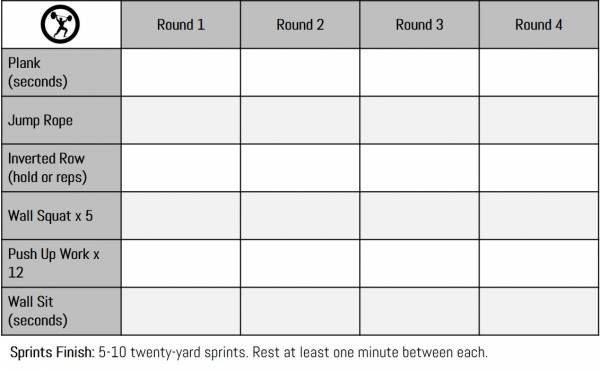I’m often approached by parents of sixth, seventh, and eighth grade students who wonder if resistance training is safe to start with their son or daughter. In short, the answer is yes. But doing it right requires intelligent progression, and parents and coaches of youth must understand that athletic development is a long-term process.
Kids have more potential for long-term success when perfect form and fundamentals are emphasized early on. When these fundamentals are ignored, gaps in performance will become evident in the form of stalled progress or injury, and will force the athlete to scale back to address the issues.
Specializing kids at an early age at the expense of fundamentals can lead to big problems later on. [Photo courtesy Pixabay]
Youth Don’t Need to Specialize, Just Move
As parents and coaches, we have a responsibility to give our kids the best opportunities in sports and for living more physically vital lives. But specialized training is not where our youth should focus. High school will offer plenty of opportunity and pressure for thinks like hitting lessons, pitching lessons, advanced strength, and plyometric training.
These are my general recommendations to parents for their child’s athletic development:
- Sit less
- Limit screen time
- Play many active games
- Play outside (if they don’t have scrapes, bumps, and bruises, they aren’t being a kid)
- Don’t specialize in one sport until late high school at the earliest
- Limit soda and avoid making candy a substitute for meals
Kids need to move and play. Our education system is failing in this regard. Play is great for mind and body and is the best way to develop a child athletically early on. If parents understand and implement these tenets and want more athletic development, I recommend they allow their son or daughter to try the following workout a few days a week on non-consecutive days.
Slow Is Smooth – Smooth Is Fast
For this workout to be effective, emphasis must be on perfect form and technical execution. As in all sports, the fundamentals are fundamental. I’ve borrowed the following mantra to guide this template from the Army’s Basic Training: “Slow is smooth, smooth is fast.” Break the movements down until they are smooth.
Perform the following 4-round circuit on 2-3 non-consecutive days a week. Aim to progress each week.
- Plank: For time. No sagging in the hips. Back should be flat enough to hold cup of water.
- Jump Rope: Twenty jumps minimum in the first week. Progress as needed.
- Inverted Row: Isometric hold at the top with elbows at 90 degrees. Your kids can also hang from a pull up bar. If they can do five or more full reps with good form, they can progress to where the body is still and the movement only comes from the elbows tracking back.
- Wall Squat x 5: Practice staying on heels and getting closer to wall. Arms inside thighs.
- Hand-Elevated Push Up: Once they can do 12 perfectly, progress to ground. Hips can’t sag and elbows must track backwards. If you can’t do a perfect push up, do a push up isometric hold with elbows at 90 degrees for time.
- Wall Sit: For time. The legs and hips must be at a 90-degree angle for this to be beneficial.
Finish the workout with 5-10 twenty-yard sprints. These are great to do barefoot on a surface free of rocks and sticks that is somewhat uneven. Shoes make it possible for kids to heel strike, a poor technique that is awful for shins and will slow your children down immensely. Another alternative is to sprint up hills. Sprints teach the body to synchronize and fire motor units faster and more smoothly.
A few tips:
- Holds: All holds are progressed for time in increments of five seconds. The goal is 1-minute holds.
- Reps: All reps are progressed until form breaks. No good comes from a rep with poor form. This attention to detail can be seen as over the top, but form is the primary component for performance and injury prevention.
- Tracking Progress: Kids are less likely to get bored if they can take pride in their effort. Log each workout so they can see their progress. Take video on your phone and show them how much they are improving. Tell them they are “technicians,” or compare their focus on the fundamentals to one of their favorite athletes. All of these help students enjoy the process.
REMEMBER, THIS IS IN ADDITION TO THEIR PLAYTIME. IT’S NOT A SUBSTITUTE.
Print a few copies of this log to help track progress:
Click the image for a printer-friendly version.
Lay Perfect Bricks, Build a Perfect Wall
At my school, we have a quote from Will Smith that we embrace:
“You don’t try to build a wall. You don’t set out to build a wall. You don’t say ‘I’m going to build the biggest, baddest, greatest wall that’s ever been built.’ You don’t start there. You say ‘I’m gonna lay this brick as perfectly as a brick can be laid,’ and you do that every single day, and soon you have a wall.”
Training adolescents is all about progression. Strength gains will be fast at first, but they will soon plateau. Help kids develop the right mindset by emphasizing that strength and conditioning is a long game that takes consistency over time. Process-oriented goals work. Set the foundation early by teaching children how to focus on progression and good mechanics, and the rest will follow in time.
Why shouldn’t kids train for specific sports early?
Don’t Race: The Cost of Early Athletic Specialization
More on the ins and outs of coaching kids:
Junior Athlete Strength and Conditioning: Your Role as a Coach







